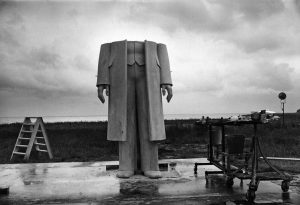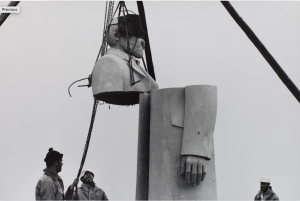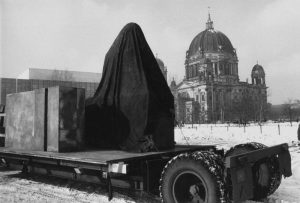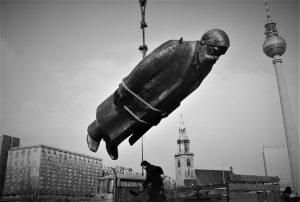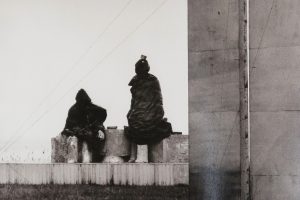Curators' Pick
Sibylle Bergemann | The Monument | 1975 - 1986

Sibylle Bergemann | The Monument | 1975 – 1986
Nothing seems more improbable than what people believed when this belief has gone with the wind. (Doris Lessing)
I am old enough to remember when the Berlin Wall fell and the end of the Cold War. In a fine inversion – and something that speaks to how history is often a collaborative delusion and how, at its best, art history can be the most direct and yet most subversive form of history – I would be teaching a decade or so later and have to explain to students what both of those events were, and why they still mattered. That was also a time when I reread Doris Lessing (I recommend her award winning – and divisive, to many readers and critics – book The Good Terrorist) : I had disdain for her books when I read them in my early twenties, and was surprised at how much more sense they made to me, as I had matured and gained experiences that resonated with her words, when I was older. At that time, I was able to appreciate her words – and especially the sentiment behind them – that I quote at the start of this essay a little better….
Critic Jane Rogers (in The Guardian) described The Good Terrorist as “witty and … angry at human stupidity and destructiveness.” I must inject (as one can’t look at these images by Sibylle Bergemann and not consider the contested legacy of Marx and Engels, communism and the GDR) how I like to antagonize my christian and communist friends (not the same people, to be clear) by citing Mordecai Richler from his seminal book Solomon Gursky Was Here. In the voice of the aforementioned Gurksy, Richler avers that the system (whether the Sermon on the Mount or the Communist Manifesto) is inspired but it is humanity that is vile…
Enough tangential commentary, let’s have some facts : “From 1975 until 1986 Sibylle Bergemann accompanied the making of the huge bronze of Marx and Engels in Gummlin / Usedom from the first sketches to the installation. The work, which was created by the sculptor Ludwig Engelhardt, is still located near the Alexanderplatz in Berlin-Mitte.” There has been controversy about this monument, as Germany struggles with its past as defined in the present, whether it be the theoretical space of Marxism or that the GDR was one of the most repressive states in the 20th century. Monuments, after all, occupy both physical space and conceptual ground in any national imaginary.
In tandem with this, I’d suggest watching the ‘tragicomedy’ film Goodbye, Lenin : “the story follows a family in East Germany (GDR); the mother is dedicated to the socialist cause and falls into a coma in October 1989, shortly before the November revolution. When she awakens eight months later in June 1990, her son attempts to protect her from a fatal shock by concealing the fall of the Berlin Wall and the collapse of communism in East Germany.” A majority of that film was shot where this sculpture is located, at the Marx – Engels Forum.
First as tragedy, then as farce, ahem, someone (okay, Marx – though some claim it was really Engels – ahem) said….
Bergemann’s words about her art and aesthetic : “I am interested in the edges of the world, not the center. The incompatible is crucial material for me. When something isn’t right about faces or landscapes that doesn’t quite fit…”
As of this writing, I am also working on an Artist You Need To Know post about the Mexican photographer Lola Álvarez Bravo (1903 – 1993). Bravo’s words also apply to Bergemann’s Monument series : “If anything is useful about my photography, it will be the sense of being a chronicle of my country.”
But I don’t approach this without bias : my stance can be seen in the primary image I’ve chosen, where the figures are ‘missing’ their heads, like a reversal of Shelley’s Ozymandius, where only the legs remain of his forgotten ‘king’….
More about this project can be seen here and more of Bergemann’s photographs can be enjoyed here.
~ Bart Gazzola
